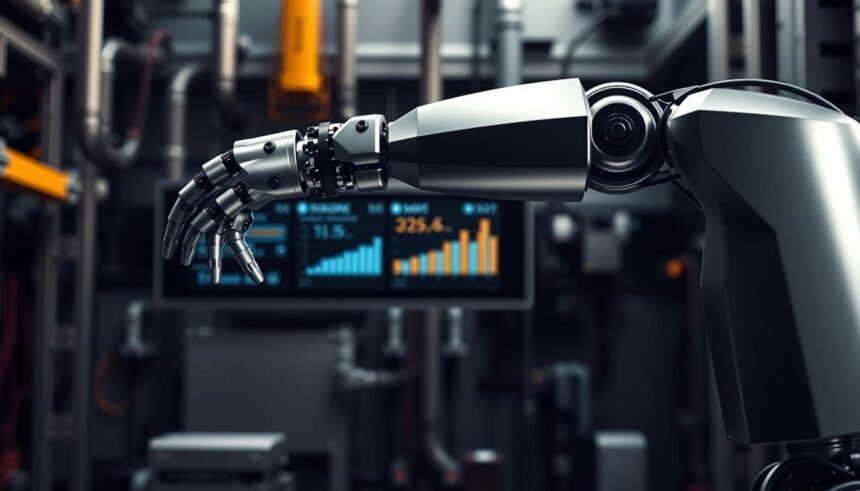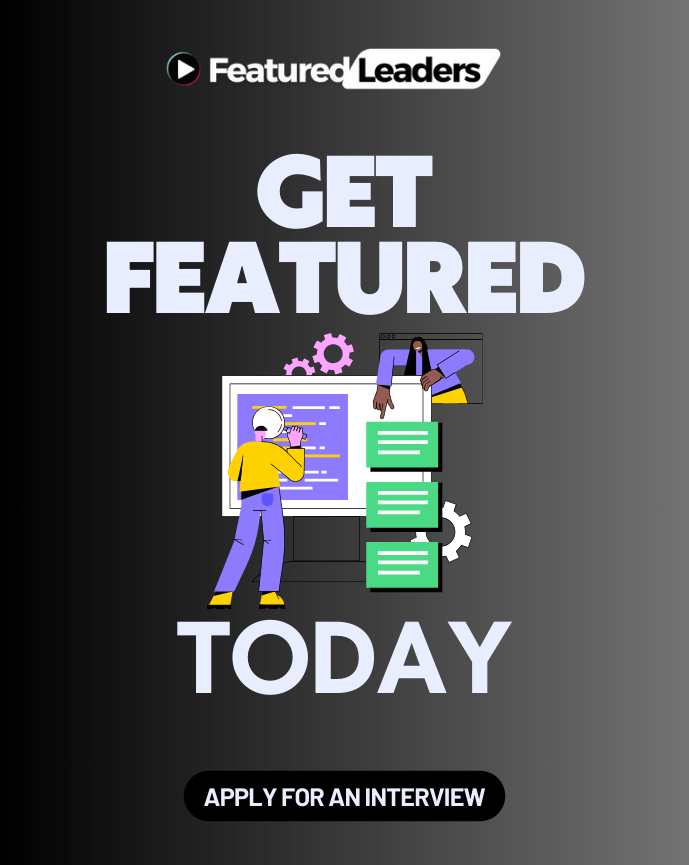At the forefront of robotic process automation (RPA) stands a visionary leader who has transformed the way businesses operate. This individual has guided a company to a valuation exceeding $10 billion and annual revenue surpassing $1 billion. Their leadership has been instrumental in shaping the future of automation.
Under their guidance, the company has recently shifted its focus toward agentic AI, blending RPA with cutting-edge artificial intelligence. This strategic move positions them at the intersection of innovation, driving efficiency and productivity across industries.
Their journey is a testament to the power of perseverance and forward-thinking. As automation continues to evolve, their work is shaping the future of the workplace, making processes smarter and more efficient.
Key Takeaways
- Leader of a $10B+ valuation company in the automation industry.
- Annual revenue exceeds $1 billion under their leadership.
- Recent focus on agentic AI to enhance RPA capabilities.
- Pioneer at the intersection of RPA and AI innovation.
- Shaping the future of automation and workplace efficiency.
Introduction: Meet Daniel Dines – The Visionary Behind UiPath
The story of UiPath begins with a bold idea and relentless determination. What started as a small project in 2005 has grown into a global leader in automation. The company has redefined how businesses operate, making repetitive tasks a thing of the past.
Who is Daniel Dines?
Born in post-communist Romania, the founder of UiPath has a remarkable journey. From humble beginnings, they bootstrapped their way to success, scaling the company to $500K in revenue within a decade. Today, they are recognized as a tech billionaire and a pioneer in robotic process automation.
What is UiPath?
UiPath is a company dedicated to automating repetitive workplace tasks. Its core mission is to make process automation accessible to businesses of all sizes. Over the years, it has evolved from an RPA specialist to a leader in AI-driven automation.
With over 3,700 employees and a NASDAQ listing, UiPath continues to innovate. Its focus on blending RPA with AI has positioned it as a key player in the automation industry. The company’s success is rooted in a leadership philosophy that values humility and cultural integrity.
| Year | Milestone |
|---|---|
| 2005 | Founded as deskNET Technologies |
| 2015 | Scaled to $500K in revenue |
| 2021 | NASDAQ listing |
| 2024 | Focus on agentic AI |
Daniel Dines – Co-founder & CEO – UiPath: A Leadership Journey
Leadership is often a journey of resilience and adaptability, as seen in the story of UiPath’s founder. Over the years, the company has grown from a small startup to a global leader in automation. This transformation was not without its challenges, but it highlights the power of perseverance and strategic vision.
From Humble Beginnings to a Billion-Dollar Company
The journey began with a simple idea: to make repetitive tasks easier for businesses. What started as a small project evolved into a company valued at over $10 billion. The founder’s ability to adapt and innovate has been key to this success.
In 2022, the leadership structure shifted to a co-CEO model, bringing in new perspectives. However, by 2024, the founder returned as the sole CEO, reaffirming their commitment to the company’s mission. This coming back marked a new chapter in the company’s evolution.
The Roller Coaster of Leadership: Stepping Down and Coming Back
Leadership is not without its ups and downs. In 2023, the founder took a step back to focus on innovation, a period they described as “soul searching.” This time allowed for reflection and strategic planning, which ultimately led to their return as CEO.
One of the key lessons learned was the importance of hiring the right people. As the founder once said,
“Never trade chemistry for talent.”
This philosophy has shaped the company’s culture and success.
Another critical moment was the decision to restructure the workforce, cutting 10% of employees. While difficult, this move was necessary to refocus on the company’s core mission. Today, the focus is on balancing a customer-centric approach with large enterprise deals, ensuring sustainable growth.
The Future of Automation: Insights from Daniel Dines
The future of automation is evolving rapidly, driven by innovative technologies. In 2024, the focus has shifted toward agentic AI, blending traditional automation with advanced artificial intelligence. This transformation is reshaping industries and redefining efficiency.
Automation in 2024: What’s Next?
Automation is no longer just about repetitive tasks. The integration of AI has unlocked new possibilities, enabling smarter and more adaptive systems. One of the key advancements is the fusion of AI and RPA, which outperforms standalone large language models (LLMs).
For example, in healthcare, this technology saves nurses up to two hours daily. Such real-world impacts highlight the potential of automation to transform workflows across industries.
The Role of Agentic AI in Shaping the Future
Agentic AI is the next evolutionary stage in automation. It empowers systems to make decisions autonomously, enhancing productivity and accuracy. The company has strategically invested in this technology, shifting over 50% of its engineering resources to develop a new platform.
This platform features a rebuilt workflow engine designed for seamless AI integration. It’s a bold move that positions the company at the forefront of innovation.
| Key Advancements | Impact |
|---|---|
| AI+RPA Fusion | Outperforms standalone LLMs |
| Rebuilt Workflow Engine | Seamless AI integration |
| Decentralized Customer Success | Enhanced customer experience |
As the world embraces automation, the company’s focus on agentic AI ensures it remains a leader in the industry. This strategic bet is not just about technology—it’s about shaping the future of work.
UiPath’s Evolution: From RPA to Agentic Automation
The automation landscape has seen remarkable advancements, especially in the transition from traditional methods to cutting-edge technologies. This evolution has been driven by the need for smarter, more efficient solutions that can handle complex workflows with ease.
What is Robotic Process Automation (RPA)?
Robotic Process Automation (RPA) refers to software robots that automate rule-based tasks. These robotic process tools are designed to handle repetitive actions, freeing up human resources for more strategic work. For example, RPA has been used to upgrade hospital billing systems, streamlining operations and reducing errors.
RPA focuses on efficiency and accuracy, making it a cornerstone of process automation. However, as industries demand more advanced solutions, the limitations of rule-based systems have become apparent. This has paved the way for the next phase of automation: agentic AI.
How Agentic AI is Transforming UiPath’s Offerings
Agentic AI represents a significant leap forward in automation. Unlike traditional RPA, which follows predefined rules, agentic AI uses cognitive capabilities to make decisions autonomously. This shift has transformed the product offerings, enabling smarter and more adaptive systems.
One of the key technical breakthroughs is the adoption of a natural language interface. This allows users to interact with automation tools more intuitively, reducing the learning curve. Additionally, customers benefit from 80% faster workflow implementation, giving them a competitive edge in the market.
The integration of agentic AI also leverages existing enterprise infrastructure, ensuring seamless adoption. Looking ahead, the focus is on autonomous process optimization, where systems continuously improve without human intervention. This positions the company as a leader in the evolving automation industry.
Daniel Dines on Decision-Making: Lessons from the CEO Seat
Effective decision-making is a cornerstone of leadership, especially in the fast-paced tech industry. The ability to balance speed with deliberation can define the success of a company. For one founder, this skill has been instrumental in navigating challenges and driving growth.
Fast Decisions vs. Slow Decisions: Daniel’s Framework
One of the key lessons from the ceo seat is knowing when to act quickly and when to take time. As the leader once said,
“Reverse fast decisions, go slow on irreversible ones.”
This mantra emphasizes the importance of adaptability in leadership. Quick decisions are essential for responding to immediate challenges, while irreversible ones require careful consideration.
For example, during the 2024 restructuring, this framework guided the process. The leader’s ability to balance speed with thoughtfulness ensured the company emerged stronger.
The Importance of Humility in Leadership
Leadership is not just about making decisions; it’s also about learning from them. A cultural shift from IPO hubris to post-crisis humility has been a defining moment. This change reflects the leader’s commitment to growth and self-awareness.
Another critical aspect is hiring the right people. The philosophy of prioritizing culture fit over raw technical skill has shaped the company’s success. As the leader once noted,
“Never trade chemistry for talent.”
This approach has fostered a collaborative and innovative environment.
Daily reflection practices, such as a reading regimen, also play a role. These habits provide perspective and help maintain focus on long-term goals. By combining humility with strategic vision, the leader continues to inspire both the team and the industry.
The Challenges of Scaling a Tech Giant
Scaling a tech giant comes with its own set of unique challenges. From managing rapid growth to maintaining a strong culture, the journey is anything but straightforward. Over the years, the company has faced growing pains, but it has also learned valuable lessons that continue to shape its strategy.
Overcoming Growing Pains: UiPath’s Journey
One of the biggest challenges in scaling is avoiding over-hiring. In 2023, the company had 3,700 employees before making necessary adjustments. Over-hiring in central functions led to inefficiencies, prompting a shift toward sustainable rigor. This operational change was crucial for long-term success.
Another key strategy was the introduction of the Executive Account Program, focusing on the top 50 clients. This approach ensured alignment with high-value customers, driving growth while maintaining quality. As one leader noted,
“Scaling isn’t just about growth; it’s about growing smart.”
The Role of Culture in Scaling Successfully
A strong culture is essential for scaling effectively. The company implemented “Diamond accounts,” fostering executive alignment and collaboration. This cultural solution helped maintain focus on core values during periods of rapid expansion.
Employee retention also played a critical role. Regular 10-person team feedback sessions ensured that people felt heard and valued. Additionally, the shift to remote work during the pandemic proved successful, showcasing the team’s adaptability and resilience.
By prioritizing culture and strategic planning, the company has navigated the complexities of scaling, setting a strong foundation for future growth.
Daniel Dines on the Future of Work
The workplace is undergoing a transformation, driven by advancements in automation. Businesses are adopting intelligent systems to streamline operations and enhance productivity. This shift is not just about replacing tasks but redefining how we work.
How Automation is Changing the Workplace
Automation is reshaping roles and responsibilities across industries. In pilot programs, 30% of tasks are already automated, freeing employees to focus on higher-value activities. The transition from tool users to process designers is becoming a reality.
One of the biggest challenges is change management. While technology adoption is critical, ensuring teams adapt to new workflows is equally important. This balance is key to successful implementation in any enterprise.
The Human Role in a World of Agents
As intelligent agents take on more tasks, the human role is evolving. Creativity and exception handling remain areas where people excel. This shift emphasizes the importance of reskilling and adapting to new jobs.
Predictions suggest a 3-5 year timeline for widespread enterprise adoption of these agents. The philosophy of “augmentation over replacement” ensures that humans and machines work together seamlessly. This approach is shaping the future of the world of work.
The Economics of AI: Daniel Dines’ Perspective
The economics of AI present both challenges and opportunities for businesses worldwide. As companies invest heavily in AI technologies, the balance between innovation and profitability becomes critical. Understanding these dynamics is essential for staying competitive in a rapidly evolving market.
Licensing AI Tech: Challenges and Opportunities
Licensing AI technology involves navigating complex financial and technical landscapes. Many companies rely on a mix of proprietary and licensed models to build their AI stacks. This approach allows for flexibility but also introduces challenges in cost management and integration.
For example, cloud-based AI deployment offers scalability but can strain budgets. On-premise solutions, while cost-effective in the long run, require significant upfront money. Striking the right balance is key to maximizing ROI.
Pricing models are also shifting. The move from per-bot licensing to value-based models reflects the growing demand for tailored solutions. This change benefits enterprise clients but requires careful planning to ensure profitability.
Profitability in the Age of AI
Profitability remains a top priority for businesses investing in AI. Public companies, in particular, face pressure to deliver returns while funding innovation. Comparing strategies, such as UiPath’s approach versus OpenAI’s burn rate, highlights the diversity in achieving financial success.
For enterprise clients, ROI is a critical factor. AI adoption must deliver measurable benefits, such as cost savings or efficiency gains. This reality drives the need for transparent and results-driven solutions.
Looking ahead, the market is expected to see consolidation among AI vendors. This trend will likely shape the competitive landscape, offering both challenges and opportunities for companies navigating the economics of AI.
UiPath’s Strategic Shifts: Adapting to a Changing Market
Adapting to market changes requires strategic shifts and a focus on customer needs. In 2024, the company has redefined its approach to stay competitive and relevant in a dynamic business environment.
One of the most significant changes has been the move from pursuing large deals to adopting a customer-centric model. This shift ensures that the needs of customers are at the forefront of every decision.
From Big Deals to Customer-Centric Approaches
The company has pivoted from targeting $100M deals to offering SMB-friendly pricing. This strategic change reflects a commitment to accessibility and inclusivity. By focusing on smaller businesses, the company has expanded its reach while maintaining a strong customer base.
Another key initiative is the co-innovation software development program. This collaborative effort involves working directly with Fortune 500 companies to design product solutions that meet specific needs. The result is a more tailored and effective approach to automation.
Decentralizing Customer Success: A New Strategy
Decentralizing customer success has been a game-changer. By integrating sales and customer success teams regionally, the company ensures a seamless experience for customers. This approach has helped maintain a 92% retention rate, a testament to its effectiveness.
Compensation restructuring has also played a role. Sales teams are now incentivized based on adoption metrics rather than pure revenue growth. This shift aligns goals with customer satisfaction and long-term success.
- Strategic pivot: $100M deals to SMB-friendly pricing
- Regional focus: Sales-CS team integration
- Customer proof: 92% retention rate maintenance
- Product development: Collaborative design with Fortune 500
- Metrics focus: NPS scores over pure revenue growth
Daniel Dines on Innovation: Staying Ahead in the Tech Race
Innovation is the lifeblood of staying competitive in the tech industry. For one founder, this means making bold and fast decisions that keep their company at the cutting edge. In 2024, the focus has shifted dramatically toward agentic automation, a move that highlights the importance of adaptability and vision.
The Importance of Bold and Fast Decisions
In the tech world, hesitation can mean falling behind. The philosophy of “launch first version, iterate fast” has been a guiding principle. This approach allows for rapid innovation while minimizing risks. As one leader noted,
“Reverse fast decisions, go slow on irreversible ones.”
This balance ensures agility without compromising long-term goals.
For example, the overnight pivot to agentic priorities required quick decisions and a clear vision. This shift not only kept the company competitive but also positioned it as a leader in the evolving automation landscape.
UiPath’s Push into Agentic Automation
The development of a modern workflow engine marks a significant milestone. This product rebuild integrates AI seamlessly, enabling smarter and more adaptive systems. The focus on agentic automation reflects a commitment to innovation and customer needs.
Key strategies include allocating 20% of R&D resources to moonshot projects and retaining top talent through equity grants. These efforts ensure the company remains at the forefront of technological advancements. With over 150 pending automation patents, the focus is on creating solutions that redefine efficiency.
- Innovation framework: Rapid iteration and continuous improvement.
- R&D strategy: High-risk, high-reward projects for breakthrough results.
- Talent retention: Equity incentives for key AI researchers.
- Patent portfolio: Expanding intellectual property to drive innovation.
By embracing bold decisions and focusing on agentic automation, the company continues to shape the future of technology. This approach ensures it remains a leader in the ever-evolving tech race.
The Personal Side of Daniel Dines: Reflections and Insights
Behind every successful leader lies a personal journey filled with lessons and reflections. For one founder, this journey is shaped by habits, philosophies, and a commitment to balance. Their approach to leadership extends beyond the boardroom, offering valuable insights into personal growth and resilience.
Finding Balance: From CEO to Chief Innovation Officer
Balancing the demands of leadership with personal well-being is no small feat. The ceo has embraced a philosophy of “strategic laziness,” focusing on efficient time management. This approach allows them to prioritize high-impact activities while maintaining a healthy work-life balance.
Daily routines play a crucial role in this balance. Early morning reading sessions at 5AM provide a quiet space for reflection and learning. This habit not only fuels personal growth but also sets a productive tone for the day.
The Role of Reflection in Leadership
Reflection is a cornerstone of effective leadership. During a Mediterranean retreat in summer 2023, the leader took time to reassess priorities and strategies. This period of introspection led to renewed focus and clarity, reinforcing the importance of stepping back to move forward.
Mentorship also plays a key role. Through a board member shadowing program, the leader invests in developing future people leaders. This initiative fosters a culture of learning and collaboration, ensuring the organization’s long-term success.
| Personal Insight | Impact |
|---|---|
| 5AM Reading Sessions | Daily reflection and learning |
| Mediterranean Retreat | Strategic reassessment and clarity |
| Board Member Shadowing | Mentorship and leadership development |
| Fiction Reading | Stress management and mental reset |
| Family Perspective | Balancing success with personal roots |
Stress management is another critical aspect. Fiction reading serves as a mental reset, offering a break from the demands of work. This practice highlights the importance of finding joy and relaxation amidst a busy schedule.
Ultimately, the leader’s journey is a testament to the power of reflection, balance, and humility. By prioritizing personal growth, they continue to inspire both their team and the broader industry.
Daniel Dines’ Advice for Aspiring Entrepreneurs
Building a successful company starts with the right people and a strong vision. For founders, hiring decisions can make or break the journey. The key is to focus on cultural alignment and adaptability, ensuring the team grows together.

Hiring the Right People: Lessons from UiPath
Early hiring decisions set the tone for a company’s future. One lesson is to prioritize cultural fit over technical skills. In the early stages, 90% of hires were chosen for their alignment with the company’s values, while only 70% were selected for skill match.
As the company scaled, the approach evolved. Adventurous early hires were balanced with expert later hires. This strategy ensured adaptability during rapid growth. A case study from 2018 highlights the importance of this balance, where a mis-hire in the sales team led to valuable lessons in recruitment.
The Importance of Culture Fit in Building a Team
A strong culture is the backbone of any successful organization. Monthly all-hands meetings became a tradition, fostering transparency and unity. This practice helped preserve the company’s core values even as it expanded globally.
Leadership development programs, such as internal CEO-in-training initiatives, ensured continuity. By focusing on culture fit, the company built a cohesive team that thrived in a competitive market.
“Never trade chemistry for talent.”
Recruitment methods also evolved. Coding tests were replaced with conversation-based interviews, emphasizing soft skills and adaptability. This shift ensured that new hires aligned with the company’s mission and values.
Conclusion: Daniel Dines’ Vision for the Future of UiPath and Automation
The future of automation is not just about technology; it’s about reshaping how we interact with the world. By 2025, the company plans to celebrate its 20th anniversary with strategic initiatives aimed at further democratizing automation. This milestone reflects a commitment to making advanced tools accessible to all.
Market predictions suggest the agentic automation sector could reach $50 billion by 2030. This growth highlights the increasing role of agents in streamlining workflows and enhancing productivity. The vision is clear: a future where humans and machines collaborate seamlessly.
Beyond business, there’s a personal goal to explore novel writing in retirement. This creative pursuit underscores the belief in balancing innovation with personal passions. The mission to democratize automation remains a cornerstone of the industry legacy.
Ultimately, the philosophy is simple: “Humans + agents > either alone.” This approach ensures that technology enhances human potential, creating a brighter, more efficient future for everyone.
FAQ
Who is Daniel Dines?
He is the co-founder and CEO of UiPath, a leading company in robotic process automation (RPA). Known for his visionary leadership, he has guided the company from its early days to becoming a global enterprise.
What is UiPath?
UiPath is a software company specializing in RPA and automation solutions. It helps businesses streamline repetitive tasks, improve efficiency, and scale operations using advanced AI and automation technologies.
What is Robotic Process Automation (RPA)?
RPA is a technology that uses software robots or “agents” to automate repetitive, rule-based tasks. It’s designed to reduce manual effort, improve accuracy, and free up employees for more strategic work.
How is agentic AI transforming UiPath’s offerings?
Agentic AI enhances UiPath’s automation capabilities by enabling more intelligent, adaptive, and autonomous systems. It allows businesses to handle complex processes and make smarter decisions with minimal human intervention.
What’s next for automation in 2024?
Automation is expected to become more intelligent and integrated into everyday workflows. Advances in AI, like agentic systems, will drive innovation, making processes faster, more efficient, and adaptable to changing business needs.
How does Daniel Dines approach decision-making?
He emphasizes the importance of balancing fast decisions with thoughtful analysis. His framework involves assessing risks, staying humble, and making bold moves when necessary to drive growth and innovation.
What role does culture play in scaling a tech company?
Culture is critical for scaling successfully. It ensures alignment, fosters collaboration, and helps maintain the company’s core values as it grows. A strong culture attracts top talent and drives long-term success.
How is automation changing the workplace?
Automation is reshaping jobs by handling repetitive tasks, allowing employees to focus on creative and strategic work. It’s creating new roles while transforming existing ones, emphasizing the need for upskilling and adaptability.
What are the challenges of licensing AI technology?
Licensing AI involves navigating complex legal, ethical, and technical issues. Companies must ensure compliance, protect intellectual property, and balance profitability with accessibility to drive widespread adoption.
What advice does Daniel Dines have for aspiring entrepreneurs?
He stresses the importance of hiring the right people and building a strong company culture. Entrepreneurs should focus on innovation, make bold decisions, and stay adaptable to succeed in a competitive market.






